Will give a late harvest, but meet expectations - tomato "Andreevsky surprise"
Tomato is a popular vegetable that tastes great when grown relatively uncomplicated. Tomatoes are loved by both adults and children, and most importantly, this product is good for the body. Every summer resident wants to grow large and fleshy tomatoes in his garden. For this, the tomato variety Andreevsky surprise is ideal for vegetable growers. The quality of vegetables is always at a high level, and the agricultural technology of this crop does not require much effort.
The content of the article
Description of the variety
The late-ripening tomato variety Andreevsky surprise was bred by Siberian breeders. This means that it is cultivated in regions with a cool climate. In 2007, the tomato was entered into the state register of the Russian Federation. The vegetable is grown both in greenhouses and in the open field. In the southern regions of Russia, tomatoes bear fruit well in open beds, in other regions, the Andreevsky surprise is cultivated in greenhouse conditions.
The variety belongs to indeterminate type of plants, that is, unlimited in growth. Bushes grow up to 2 m in height. Medium-sized leaves are dark green in color. Every 3 leaves, the culture forms inflorescences. The plant is self-pollinating, but cross-pollination of flowers by insects or wind is also possible. After the formation of 8-9 leaves, the first brush appears. Fruit ripening occurs gradually, starting from the lower brushes. The peduncle has an articulation. The variety needs pinching and garter to the trellis or peg.

Distinctive features
Tomato variety Andreevsky surprise does not have a high yield, but has large fruit sizes, while the quality of the tomatoes remains high. Vegetables ripen perfectly on their own in a dark and warm place.
Fruit characteristics and yield
The fruits have excellent taste. Tomato Andreevsky surprise has the following characteristics:
- fruits are round-flat, smooth, of medium density;
- the color of the skin and pulp of ripe tomatoes is deep pink;
- the pulp is juicy and dense, multi-chamber;
- the weight of one fruit reaches from 300 to 500 g, but sometimes tomatoes grow up to 1 kg;
- the tomatoes are delicious, sweet;
- vegetable is versatile in use.
From 1 sq. m harvested from 4 to 8 kg of the crop. When growing tomatoes in a greenhouse with the fulfillment of all agrotechnical conditions, the yield reaches its maximum. When cultivating tomatoes in the open field, the fruiting rates decrease due to the unstable climate. Tomatoes ripen together. Fruiting occurs in the second half of July. The last tomato harvest is carried out in the third decade of August.
Did you know? Europeans have known tomatoes since the middle of the 16th century, but they began to be eaten only at the end of the 18th century. Before that, tomato bushes were grown exclusively as ornamental plants, and their fruits were considered poisonous. As early as 1774, gardening manuals warned that tomatoes are maddening to those who eat them. Perhaps they were not so far from the truth: a tasty juicy tomato, if it does not drive a true gourmet crazy, will certainly delight!
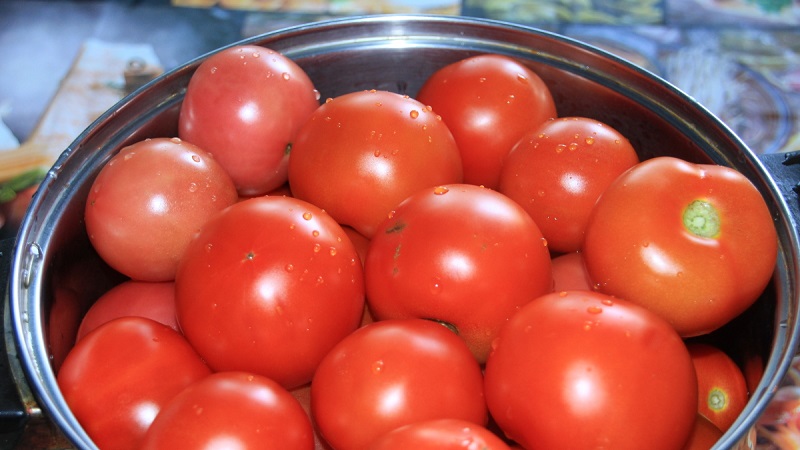
How to grow seedlings
The most reliable method of cultivating tomato culture is seedling. Vegetable growers are engaged in sowing seeds in early to mid-March.They are guided by the time when, when planting tomatoes in a permanent place, night frosts will be irretrievable. Seedlings are grown for about two months.
Seed preparation
Seeds purchased from a specialist gardening store do not require processing. Disinfection is carried out by the manufacturer, which is indicated on the packaging with grains. If the seed was purchased from hands or harvested from its own harvest, the grains are disinfected. For this, the seeds are kept for 20-30 minutes in a 1% solution of potassium permanganate.
Capacity and soil
For growing seedlings, use the following containers:
- polypropylene or plastic cups;
- plastic or wooden boxes of any size;
- special purchased containers with cells;
- peat cups or tablets.
They also use containers from improvised means, for example, cut bottles or milk cartons. The best option is peat pills or cups, as they contain a very nutritious potting mix. Another plus of such products is a convenient transplant. When diving, the tablet is simply transferred to a large container. Over time, the peat walls become limp and dissolve in the soil. In this case, the root system is not damaged, and the plant itself does not experience stress when conditions change.
The soil is used purchased or prepared independently, mixing manure, neutral peat, sand and soil from the garden in a ratio of 1: 1: 1: 3.
The soil must be disinfected with a strong solution of potassium permanganate. Disinfection of the soil is carried out 1-2 days before sowing. After the procedure, bacteria useful for the growth of the culture begin to develop in the ground.
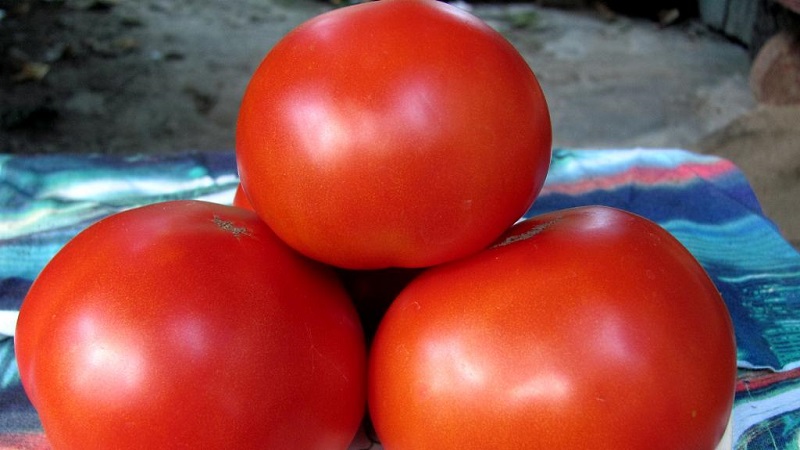
Sowing
Planting seeds for seedlings is carried out as follows:
- a drainage layer (small pebbles or river sand) is poured onto the bottom of the container;
- a ready-made soil mixture is placed in a container;
- on the surface of the soil, several parallel grooves are made with a depth of 2 cm, and the distance between them is 3-4 cm;
- seeds are embedded in grooves at a distance of 2-3 cm from each other.
The container is covered with transparent glass or polyethylene. So seeds create a suitable microclimate. The container is ventilated once a day.
Growing and care
After 3-4 days at a temperature of +25 ° C, the first sprouts of tomatoes appear. The culture does well without additional lighting, so the container with seedlings is simply placed on the windowsill.
For your information. After removing the film, the soil dries out much faster, therefore, tomato seedlings are moistened as the soil dries out and the optimal temperature regime (+ 25 ° C) is observed.
At the time when the seedlings have 2 true leaves, the plants are dived into separate containers. In order not to delay the further development of tomatoes, experienced vegetable growers carry out the following:
- when transplanting, the plants are buried almost to the cotyledon leaves, so new roots will begin to form in the bushes;
- to protect plants from fungal diseases, the roots of seedlings are disinfected in a 1% solution of potassium permanganate;
- 10 days after transplanting, the plants are given the first feeding.
Further fertilization is carried out at intervals of every 7-10 days. Mullein infusion is used as top dressing. Also, tomato seedlings are hardened. Two weeks before the expected planting, the plants are taken out into the street or balcony for 1-2 hours. The residence time of tomatoes in the fresh air is gradually increased.
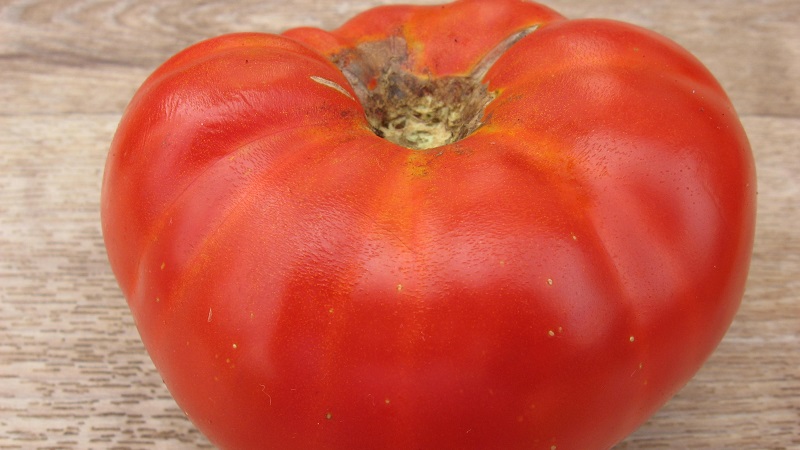
How to grow tomatoes
Correct cultivation of tomatoes Andreevsky surprise consists in timely moistening, loosening the soil and periodic weeding of the beds from weeds. Although the culture has good resistance to diseases, gardeners still treat the soil with a weak solution of potassium permanganate.
Landing
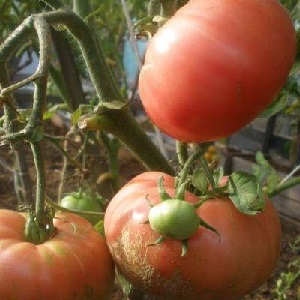 If flower brushes have begun to appear in the seedlings, then it is time to transplant the plants into open ground or into a greenhouse no later than two weeks later.Violation of these terms will lead to a slowdown in crop growth, which will further reduce the yield.
If flower brushes have begun to appear in the seedlings, then it is time to transplant the plants into open ground or into a greenhouse no later than two weeks later.Violation of these terms will lead to a slowdown in crop growth, which will further reduce the yield.
If during this time it is not possible to transplant tomatoes, the emerging flower brush is pinched off. So the planting dates are postponed for another week. Tomatoes planted on time will give the first harvest two months after transplanting to a permanent place.
Since the plants are tall, the height of the greenhouse should correspond to the height of the tomatoes (at least 2 m). The soil is well warmed up before planting tomatoes. Manure is evenly spread on it, which is covered with 15 cm of earth. A small layer of wood ash is made between the manure and the soil.
Tomatoes are planted in open ground or in a greenhouse according to the following rules:
- leave 60 cm between the plants, and 40 between the rows;
- if possible, tomatoes are transplanted in cloudy weather, in the late afternoon;
- a trellis or pegs are installed in advance so that the tall stems are more stable and do not break from strong winds.
Care
The variety Andreevsky Surprise is looked after in a standard way, like all tomatoes. For fruit ripening, tomatoes are regularly moistened and fertilized.
Plant care:
- Water the tomatoes at the root (10 liters under 1 bush once a week).
- The culture is fed every 3 weeks. Mineral fertilizers alternate with organic ones, and for faster ripening of fruits, potash fertilizers are applied.
- The soil around the bushes is loosened and at the same time weeds are removed.
Since the tomato variety Andreevsky surprise belongs to the indeterminate, the bushes must be properly formed. All stepchildren are removed on the plant, and then lead it to 1-2 stems.
Features of cultivation and possible difficulties
Both in the open field and in the greenhouse, tomatoes are tied to a trellis, but not too tightly. Otherwise, the plant will die. If the culture grows in a greenhouse, it must be ventilated by opening two opposite windows or doors.
Diseases and pests
Although the tomato variety Andreevsky surprise has strong immunity, under unfavorable conditions or improper care there is a risk of plant diseases. Therefore, prevention is needed.
Mosaic - a viral disease that manifests itself as yellow spots on the leaves and their subsequent deformation. For sowing tomatoes, 3-4-year-old seeds are used whenever possible. Before planting, the grain is disinfected for 20-30 minutes in a 1% solution of potassium permanganate. Every 10 days, the seedlings are treated with skim milk (1 liter of milk and 1 tsp of urea are dissolved in 10 liters of water). Diseased plants are removed.
Late blight - fungal disease. It covers the leaves with brown spots, which gradually transfer to the fruit. For the prevention and treatment of the disease, plants are sprayed with a solution of iodine (1 tsp. Per 10 l of water) or a solution of calcium nitrate (1 tbsp. Per 10 l of water). Also use the drug "Profit Gold".
The nuances of growing in open ground and in a greenhouse
Plants bear fruit on almost any soil, but crop rotation plays an important role. Good precursors for tomatoes:
The culture is not grown after tomatoes, potatoes and other nightshades earlier than 3-4 years later. Otherwise, the soil becomes a potential carrier of various infections and pest larvae.
Important! Before planting tomatoes, the soil is fertilized with siderates. To do this, in the fall, the site is sown with legumes (sainfoin, alfalfa, clover, etc.), which are mowed and plowed into the soil by 5-8 cm 2 weeks before planting.
Harvesting and application of the crop
Tomatoes are harvested as the fruit ripens. Under greenhouse conditions, fruiting begins in July. Tomatoes are harvested in 3-4 sunsets, in the morning or evening hours, when the sun is not beaming.
Tomatoes are great for summer salads and fresh meals. They retain their taste remarkably well in pickles. Light and aromatic tomato juice is obtained from tomatoes of this variety.
Advantages and disadvantages of the variety
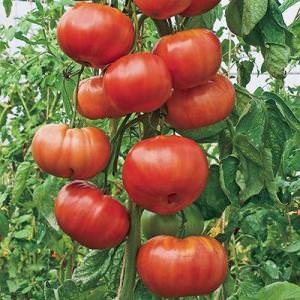 Positive aspects of the tomato variety Andreevsky surprise:
Positive aspects of the tomato variety Andreevsky surprise:
- undemanding to growing conditions;
- excellent taste of fruits;
- good disease resistance;
- the possibility of growing crops in the northern regions;
- independent ripening of fruits taken from the bush;
- large size of vegetables;
- high sugar content.
Disadvantages of the variety:
- low productivity;
- cracking of fruits with excessive moisture;
- short shelf life (no more than 2 weeks);
- the need for pinching (shoots are formed throughout the season);
- poor transportability.
Farmers reviews
Tomato variety Andreevsky surprise, according to vegetable growers, is successfully used both for processing and for making salads. Let's find out some of the opinions of summer residents.
Sergey, Izhevsk: “A couple of years ago I saw big tomatoes in my neighbor's garden. I consulted with him and bought tomato seeds Andreevsky surprise. I grew the plant in seedlings, then transplanted it into open ground. The bushes grew powerful and tall, there were not many fruits on them, but they are very tasty. The largest vegetables grew on the lower branches. I have not decided yet whether to plant this variety next season or not. "
Tamara, Rostov-on-Don: “I have been growing tomatoes for 10 years in a row, this is my favorite vegetable in the garden. I always plant several varieties at a time. During this time, I have collected several decent types of tomatoes. One of them is the Andreevsky surprise. The fruits grow very large, as in the photo of the package with seeds, and at the same time do not lose their taste. I use these great vegetables to make salads and process them to preserve juice for the winter. "
Conclusion
Andreevsky surprise pleases vegetable growers with large fruits and excellent taste. The variety is unpretentious in care and takes root well in various conditions. In addition, the culture has a strong immunity to most diseases, which greatly simplifies the cultivation of this popular vegetable.